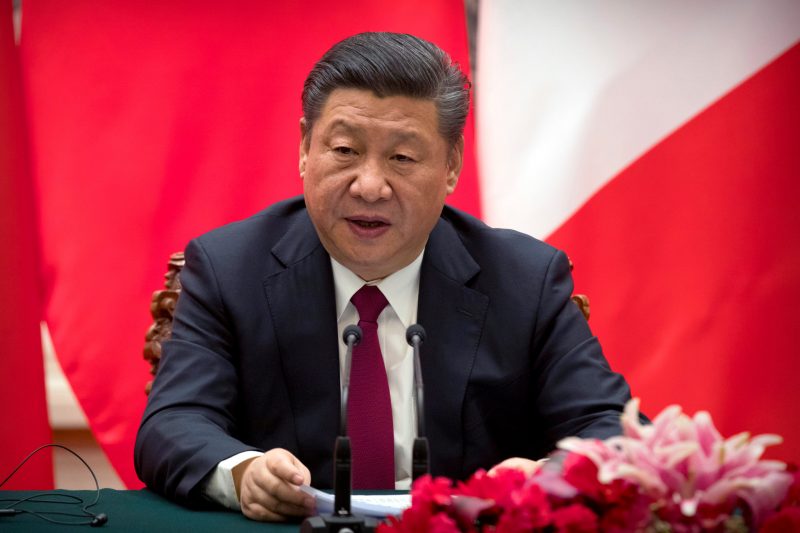
Yacouba Sawadogo, a farmer known in Burkina Faso as “the man who conquered the desert” for revolutionizing agricultural methods and creating a 75-hectare forest on barren land, died Dec. 3 in Ouahigouya, a northern provincial capital this West African country. He was 77.
His death in a hospital after a long illness was confirmed by his son Loukmane Sawadogo.
Mr. Sawadogo, a slim, taciturn man who never learned to read or write, received a hero’s welcome in 2018 when he returned to his landlocked country of Burkina Faso after winning the Right Livelihood Award in Stockholm, given in 1980 to honor social and environmental activists. A crowd of people welcomed him at the airport in the state capital Ouagadougou, and the then president of the country received him.
Years earlier, villagers in his dry, windswept northern lands had called him a madman for making a simple improvement to a centuries-old water-saving technique. But Mr. Sawadogo had the last laugh: The forest he created, with more than 60 species of trees and shrubs, is unique in the Sahel, the semi-desert region that stretches across the upper third of Africa, forestry experts said.
The encroachment of the Sahara, fueled by decades of indiscriminate felling of trees and now also by climate change with reduced rainfall, poses a major threat to an already fragile region. Large tracts of land from the Gulf of Guinea to the desert have been deforested.
At the end of his life, Mr. Sawadogo was considered one of the few who had successfully defended themselves. Farmers using his techniques have more than tripled their grain yields, in an area where agriculture relies on scant rainfall. Burkina Faso, the 22nd poorest country in the world, has an average life expectancy of under 63 years.
Chris Riej, a Dutch geographer and senior fellow at the World Resources Institute in Washington, said of Mr. Sawadogo in a telephone interview: “He has single-handedly had more influence on soil and water conservation than all the experts put together.” He added: “It “He managed to build a forest from nothing, a 30-hectare forest with the greatest biodiversity in the Sahel.” In the end, he became a kind of national hero.”
Mr. Sawadogo won the United Nations Champions of the Earth Award in 2020. Luc Gnacadja, former head of the U.N. program to combat desertification, said in an interview from the country bordering Benin: “He was extraordinary. An entire desert area was transformed.”
Mr. Gnacadja invited Mr. Sawadogo to be the keynote speaker for a high-level conference in Switzerland. “He explained with all humility what he had done,” he said, “and he left us a legacy that shows that ecosystem degradation is not inevitable.”
Mr. Sawadogo had an almost mystical relationship with the trees he brought into existence – the marula, the acacia, the gum arabic, the desert date – and treated them “like people,” his cousin Arouna Sawadogo said in an interview from Burkina Faso. When arsonists set fire to his forest several times in the 2000s, jealous of Mr. Sawadogo’s success, the cousin said, Mr. Sawadogo was “an old man with a sad face; he remained in the ashes for several days.”
But he always recovered and told his son Loukmane, one of his 27 children with three wives: “Even if I have a little strength left, even for a minute, if there is a tree to plant, I will do it .” ”
It took years of hardship – drought, famine and shifting political winds in a country where strong rulers alternate with coups – for Mr. Sawadogo to complete his transformation from a suspicious outsider to a respectful figure sought after by farmers across the Sahel his advice.
“Some people just do whatever they want with our forests,” Mr. Sawadogo said in a 2010 film about him: “The Man Who Stopped the Desert“” by British producer and director Mark Dodd. “If you are serious and take up work that others don’t appreciate, they treat you like a crazy person.”
He recalled: “People didn’t even want to talk to me. They said I was a crazy man.”
Mr. Sawadogo’s heresy revolved around changing the practice of what local farmers called Zaï – digging small pits to collect valuable rainwater. These farmers usually waited until the beginning of the rainy season, at the beginning of summer, to dig the Zaï.
But Mr. Sawadogo started long before that, when the earth was bone dry. And he dug the pits further and deeper. He put dung and stones on the ground. He used termites to break up the land. The manure contained seeds. When the rains came, the stones helped retain the water, and the water turned the seeds into seedlings, which he nurtured. The ground remained wet for several weeks after the rain.
“The results were impressive; The soil improved along with his crop yield,” the United Nations said in announcing his award. “He could grow trees on the dry ground.”
Mr. Sawadogo eventually helped by planting trees himself. Trees protected the crops from the wind.
“When I realized how important trees are, I started planting the forest,” he said in the film. Mr Reij of the World Resources Institute said: “For him the trees became more important than the grains.”
Yacouba Sawadogo was born on January 1, 1946 in Gourga, a village about 110 miles north of Ouagadougou, to farmer Adama Sawadogo and Fatimata Bilem. When he was very young, his parents sent him to a madrasa in Mali, where, as he recalled in the film, the head of the school told him that he was destined for greatness.
When he returned home as a teenager, he opened a motorcycle parts stall at the market in Ouahigouya, the provincial capital. It was successful and allowed him to put money aside. But he was restless and longed to return to the country, he later told interviewers. The odds against him were the looming drought that ravaged the Sahel from the mid-1970s, when he left, until the mid-1980s.
Rainfall fell by 30 percent. Entire villages were abandoned because farmers could no longer feed their families. “It was kind of an environmental disaster,” Mr. Reij said. It became urgent to conserve and productively use the low rainfall. Mr. Sawadogo began experimenting.
The improved Zaï – he also put millet seeds in the pits – led to a tripling of his grain yield, enabling him to feed his family for three years, he told one Interviewer in 2011.
In the 1990s, both researchers and farmers came to study his methods; Niger alone sent 13 farmers. Fame for Mr. Sawadogo and travel abroad followed. He attended a United Nations COP conference on climate change and testified before members of Congress in Washington.
“He was a bit like the trees he wanted to protect, simple and accessible,” Luc Damiba, a honey producer and film festival director in Burkina Faso, said in an interview.
After the last fire, the government built a fence around Mr. Sawadogo’s forest at the urging of Burkinabe citizens, Mr. Reij said.
In addition to his son Loukmane, Mr. Sawadogo is survived by his three wives, Safiata, Khaddar Su and Raqueta.
“He managed to find resources to withstand the drought,” Mr Gnacadja said. “It’s called adaptation.”
Herve Taoko contributed to reporting from Ouagadougou.






Recent Comments